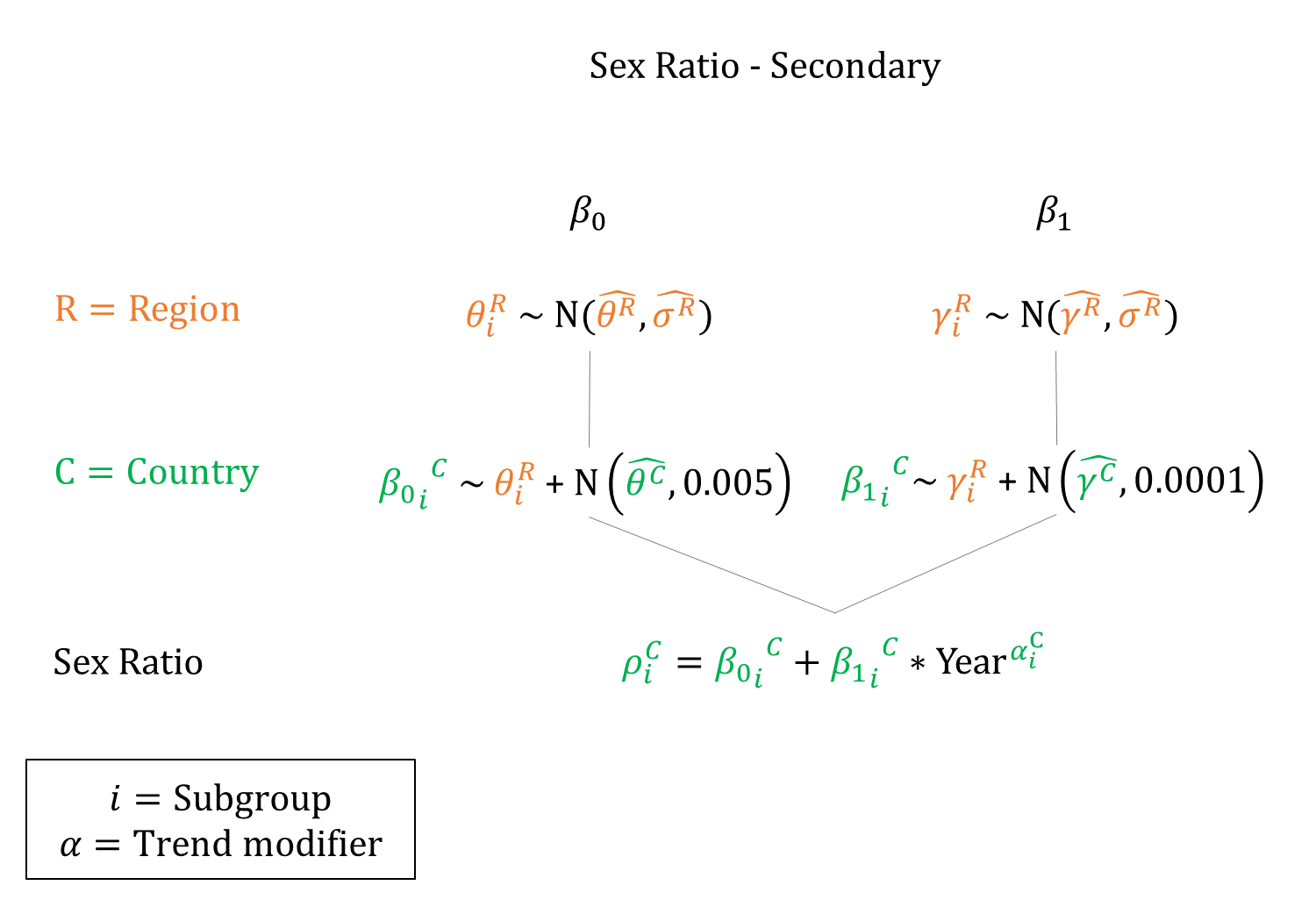Sex Ratio - Secondary
Model Inputs \(\rightarrow\) Family Planning Parameters \(\rightarrow\) Sex Ratio - Secondary
Overview
The secondary sex ratio is the ratio at birth (males/females), which may be higher than the primary sex ratio due to sex-selective abortion, driven by factors such as son preference, readily available technology of prenatal sex determination, and fertility decline.[1,2] In the model, the difference between the secondary and primary sex ratio in each country is used to modify the probability of abortion for female fetuses.
Data
The UN World Population Prospects 2022 includes estimates of sex ratio at birth for each country over time.[3] Estimates range from 1.0 to nearly 1.2 in countries such as China and Azerbaijan where sex-selective abortion may be more prevalent.
Parameters
To estimate priors we fitted hierarchical models by region to trends in the estimated secondary sex ratios between 1990 and 2020.

Priors
Model Implementation
The difference between the primary and secondary sex ratio is used to modify the risk of abortion for female fetuses. (Note: This only applies to singleton pregnancies in the model.) To estimate the relative risk of sex-selective abortion based on these ratios, let \(\rho_1\) by the primary sex ratio \(\frac{m_1}{f_1}\), and \(\rho_2\) by the secondary sex ratio \(\frac{m_2}{f_2}\). Let \(\pi\) by the probability of abortion for males. We then have \(\rho_2=\frac{m_1*(1-\pi)}{f_1*(1-\pi*\alpha)}\), where \(\alpha\) is the relative risk of abortion for females. Solving for \(\alpha\) we have
\[ \alpha=\frac{\pi+r-1}{r\pi} \] where \(r=\frac{\rho_2}{\rho_1}\).
We enforced a floor of 1.0 for the relative risk of sex-selective abortion (\(\alpha\)).
References
- Chao F, Gerland P, Cook AR, Alkema L. Systematic assessment of the sex ratio at birth for all countries and estimation of national imbalances and regional reference levels. Proc Natl Acad Sci U S A 2019; 116(19): 9303-9311. DOI: https://doi.org/10.1073/pnas.1812593116
- Chao F, Gerland P, Cook AR, Alkema L. Global estimation and scenario-based projections of sex ratio at birth and missing female births using a Bayesian hierarchical time series mixture model. Ann Appl Stat 2021; 15(3): 1499-1528. DOI: https://doi.org/10.1214/20-AOAS1436
- United Nations, Department of Economic and Social Affairs, Population Division (2022). World Population Prospects 2022, Online Edition. https://population.un.org/wpp/Download/Standard/CSV/
GMatH (Global Maternal Health) Model - Last updated: 28 November 2022
© Copyright 2020-2022 Zachary J. Ward
zward@hsph.harvard.edu